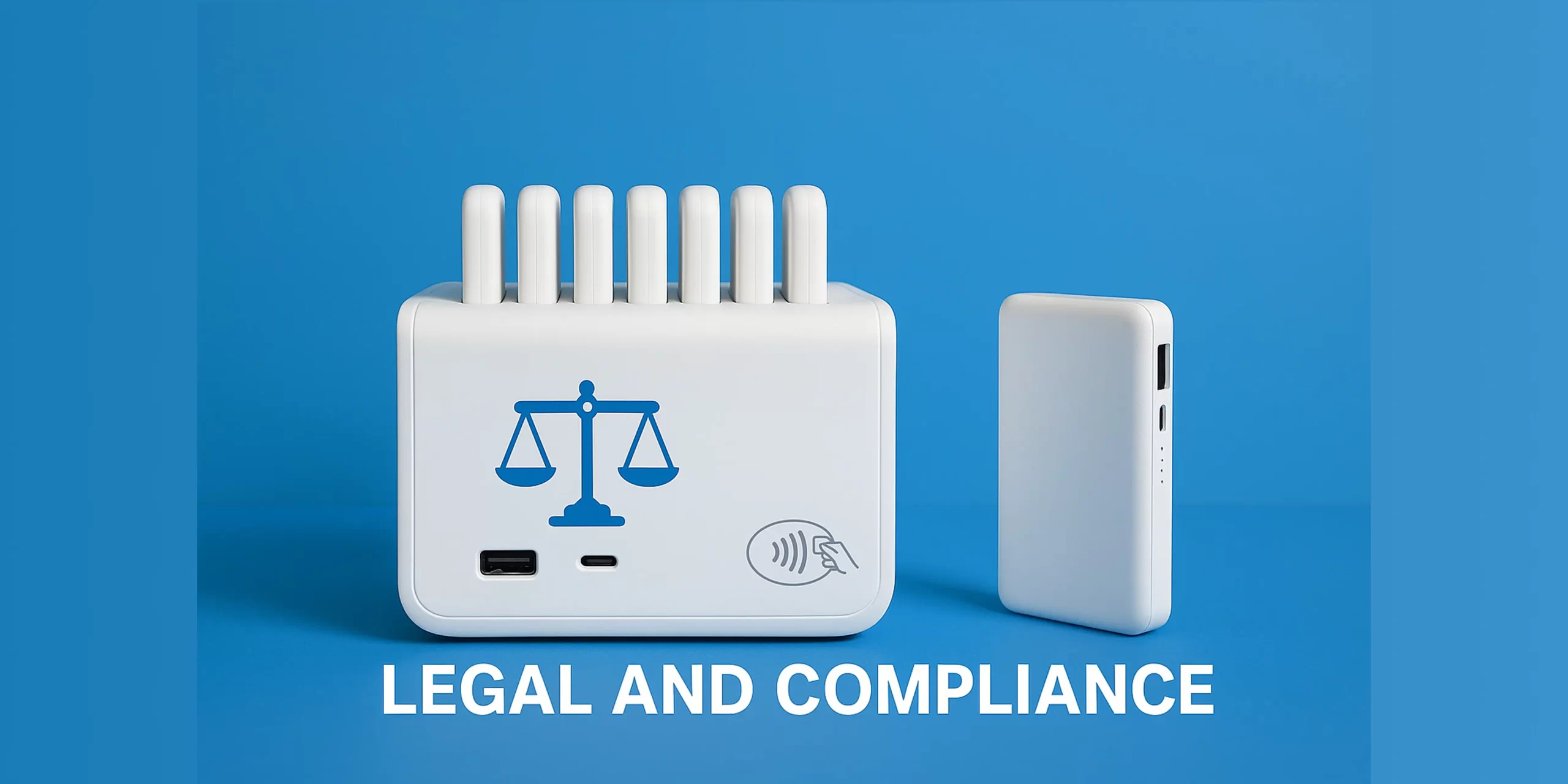
Table of Contents
As the shared power bank industry surges across Asia and eyes expansion into global markets, the conversation has largely focused on speed, convenience, and scaling infrastructure. But beneath every kiosk lies a deeper, often overlooked battleground: compliance.
From battery safety standards to user data laws and refund policies, legal oversight shapes whether a shared power bank business can enter a new market, survive an audit, or withstand a lawsuit. In this article, we explore four critical pillars of legal and compliance strategy for operators and investors alike.
1. Data Privacy: What You Know Can Hurt You
Shared power bank platforms often rely on mobile apps or mini-programs for user access, and this means collecting sensitive data—names, phone numbers, device identifiers, even GPS location.
In regions like the European Union, the General Data Protection Regulation (GDPR) enforces strict rules:
- Consent must be explicit, not implied. A pre-ticked checkbox or hidden terms may be legally invalid.
- Data minimization is required. If you only need a phone number, collecting contact lists or storage permissions could breach compliance.
- If operating in China or collecting data from Chinese nationals, the Personal Information Protection Law (PIPL) introduces cross-border transfer restrictions and consent language requirements.

Make privacy a product feature. A transparent data dashboard for users not only builds trust but reduces legal exposure.
2. Hardware Safety Compliance: Certify or Die
You may assume a mobile charger is “just hardware.” But in legal terms, it’s a high-density lithium-ion device with explosive potential.
Before entering most international markets, shared power bank units must meet mandatory safety certifications:
- CE (EU): Required for any electronics sold in the European Union.
- FCC (US): Certification for radio-frequency emissions, especially if your device includes Bluetooth or mobile modules.
- PSE (Japan): A mandatory safety label for electrical appliances, with strict testing on overheating, leakage, and more.
- UN38.3: Governs transportation safety of lithium batteries—especially crucial for import/export and logistics partners.
A failure to meet these requirements can result in customs seizure, retail bans, or class-action liability in case of user injury.

Don’t rely solely on your OEM. Require certification reports from a third-party lab, and audit sample batches post-manufacture.
3. User Agreements: Don’t Hide Behind the Fine Print
If your app’s Terms & Conditions are written in legalese, buried in menus, or updated without notification, you’re building on shaky ground.
Modern consumer protection laws in the US, UK, and EU increasingly challenge unfair contractual terms. Key risks include:
- Automatic renewals without user re-consent
- Damage fees or penalties not clearly disclosed at point of use
- One-sided liability clauses (e.g. “We are never responsible for your loss”)
You also need to ensure your refund policies (especially for deposits) are easy to find, easy to trigger, and in local language if applicable.

Use plain language in your contracts and consider adding summaries for key terms. If you need legal coverage, don’t make users scroll through 15 paragraphs—highlight what matters.
4. Deposits and Payment Processing: Where Trust Can Break
A key lesson from the downfall of China’s bike-sharing giants (like Ofo) is how quickly user trust vanishes when deposits get stuck.
If your business model includes refundable deposits:
- Funds should be stored in dedicated escrow accounts, not commingled with operational capital.
- Clear timelines must be defined: How long until users get their deposit back? What happens in case of a dispute?
- Auto-billing mechanisms (e.g., overtime fees, lost device charges) must comply with PCI DSS standards and local financial laws.
In some jurisdictions, like California, holding unclaimed deposits beyond a set period may classify them as escheat property, requiring you to hand them to the state.

Move toward deposit-free rentals via third-party credit scoring (like Apple Pay, Google Pay, or Klarna integrations) to reduce legal and user friction.
Final Thoughts: Compliance as a Growth Lever
Too often, startups treat legal as a cost center or a “when-we-get-bigger” problem. But in shared infrastructure businesses like power banks, compliance is your moat:
- It builds trust with landlords and merchants.
- It wins over privacy-conscious users in mature markets.
- And it protects your cap table from lawsuits and product recalls.
So the next time you charge your phone at a public kiosk, ask yourself:
“Is this just a convenience device—or a legal liability waiting to happen?”
The answer, for your business, may determine your long-term survival.



